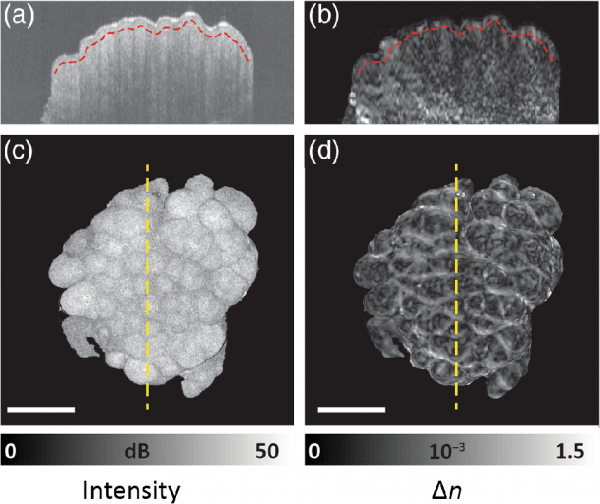Influence of tissue fixation on depth-resolved birefringence of oral cavity tissue samples
Journal of Biomedical Optics 2020 | 25(9), 096003
Karnowski, K., Li, Q., Poudyal, A., Villiger, M., Farah, C. S., Sampson, D. D.
Abstract:
Significance: To advance our understanding of the contrast observed when imaging with polarization-sensitive optical coherence tomography (PS-OCT) and its correlation with oral cancerous pathologies, a detailed comparison with histology provided via ex vivo fixed tissue is required. The effects of tissue fixation, however, on such polarization-based contrast have not yet been investigated.
Aim: A study was performed to assess the impact of tissue fixation on depth-resolved (i.e., local) birefringence measured with PS-OCT.
Approach: A PS-OCT system based on depth-encoded polarization multiplexing and polarization-diverse detection was used to measure the Jones matrix of a sample. A wide variety of ex vivo samples were measured freshly after excision and 24 h after fixation, consistent with standard pathology. Some samples were also measured 48 h after fixation.
Results: The tissue fixation does not diminish the birefringence contrast. Statistically significant changes were observed in 11 out of 12 samples; these changes represented an increase in contrast, overall, by 11% on average.
Conclusions: We conclude that the fixed samples are suitable for studies seeking a deeper understanding of birefringence contrast in oral tissue pathology. The enhancement of contrast removes the need to image immediately postexcision and will facilitate future investigations with PS-OCT and other advanced polarization-sensitive microscopy methods, such as mapping of the local optic axis with PS-OCT and PS-optical coherence microscopy.



